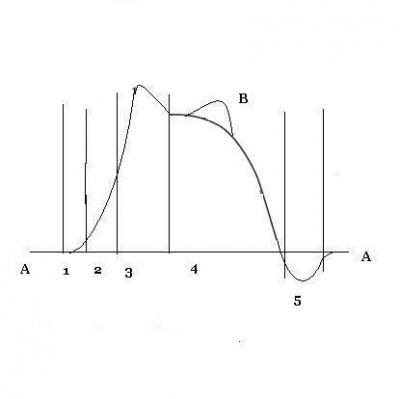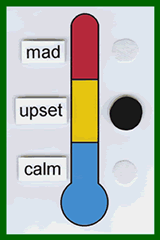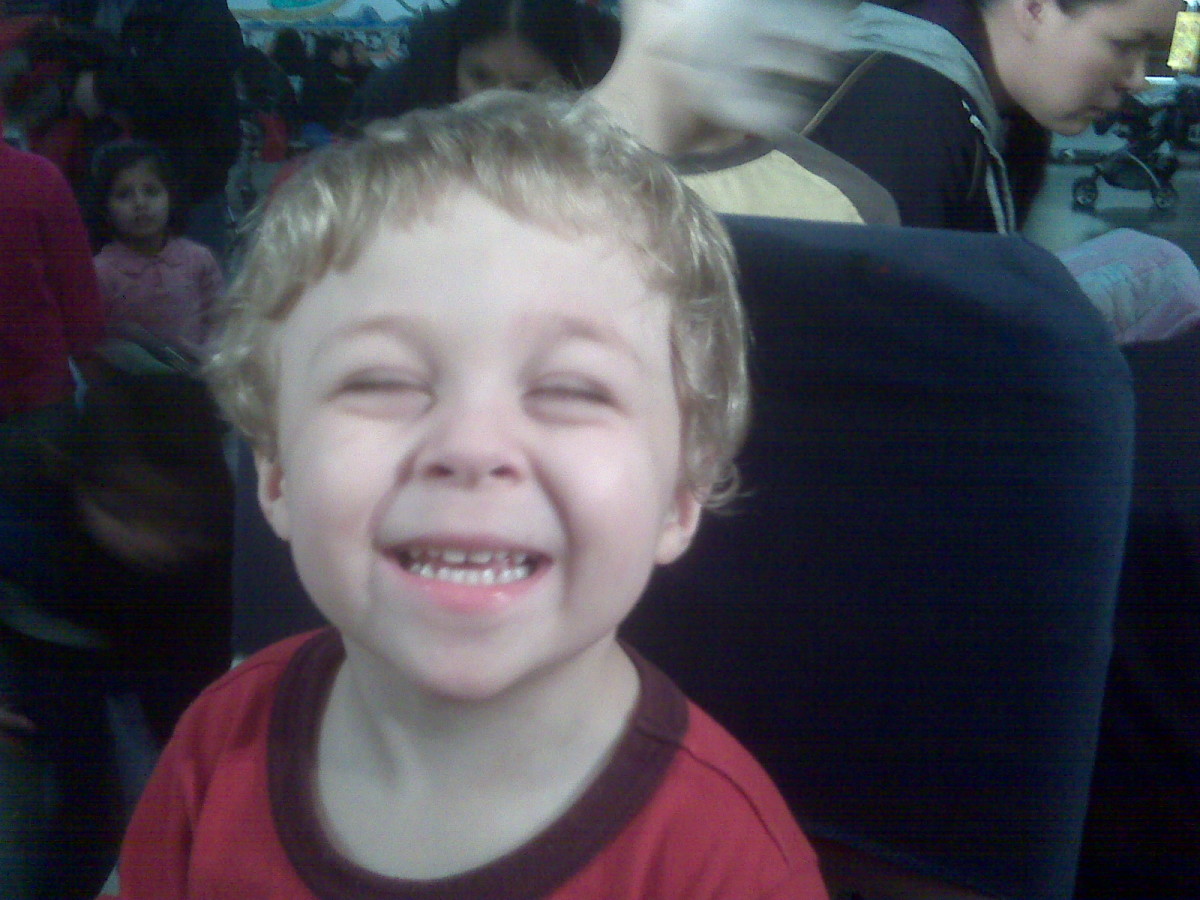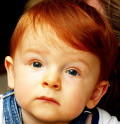Understanding Anger in ASD children

Living life in a powder keg
At age 4 my son, Thing 1, was diagnosed with Asperger's Syndrome.
Asperger's Syndrome is a series of autistic-like behaviours and difficulties with social and communication skills in children with otherwise normal intelligence and language development.
One problem that parents of children with Asperger's Syndrome, and indeed other Autistic Spectrum Disorders, have to learn to cope with is anger. Children with ASDs experience anger differently from other people and express their anger differently from other people. This can present a challenge for any parent.
I am sharing here some of those differences found in children with ASDs in an effort to help other people understand how they experience anger better. And hopefully provide a few methods of dealing with that anger in a less destructive manner.

How Most People Experience Anger
Anger is a behavioural response to a situation or a perceived injustice. When focused, it can give courage to deal with that situation. Anger can be either positive or negative.
We do not always respond to triggers in the same way. Most people can generally tell when they are becoming angry and make choices on how to respond to or act with that anger. As we grow we learn how to limit or control anger.

How a Person with ASD Experiences Anger
Anger is a behaviour
Behaviour is communication
Those with ASDs experience problems with communication. They have difficulties in 3 major areas.
- Social communication
- Social imagination
- Social interaction
They are not able to understand the rules of social communication that most children instinctively learn. These are the social niceties dealing with body language, facial expressions, tone of voice. It can even include such things as understanding about personal space.
They are not able to imagine things. Thing 1 absolutely needs routine and structure in his life. Changing any part of his routine without advance warning can cause immediate problems with anger. This is because of the problems he has with imagination. The changes that life throws us, that most people take in their stride, have a devastating effect on people with ASDs.
Theory of Mind
They have trouble understanding that what they are thinking, other people are not thinking or cannot know. "If I know it, you should know it too."
Knowing this, it becomes easier to understand why a person with ASDs has such problems with anger. Their inability to communicate effectively with others around them leads to an increased likelihood of frustration and anger. This leads in turn to an impaired ability to manage and respond appropriately to anger.
What Particular Behaviours can Be Seen in Children with ASDs?Increased anxiety - Children with ASDs tend to have very high anxiety levels
Difficulty expressing their anger - They don't know how to express their anger appropriately and cannot understand the physical and verbal cues of other's around them.
Lack of understanding of social hierarchies - In their thinking, they are on top with everyone else beneath, they have trouble understanding that others are sometimes in charge.
Literal thinking/ rule driven - They do not understand social idioms. These kids are very concrete in their thinking. If you say to a child with ASD that you will be there in 1 minute, he will sit there and count out 60 seconds. You said, 1 minute, it's been 1 minute, why aren't you here now!
Lack of labelling ability
Lack of fragmentation - it's an all or nothing situation for them
Lack of impulse control
Sensory issues - many of these children are hypersensitive to sensory stimulants. Noises, smells, tastes, textures, sights that would not affect most people can be at best distracting, at worst physically painful to children with ASDs.
Overloading - of expectations in communication. Simply put, you wouldn't hand a blind man a book and tell him to read it. Yet we constantly tell these children with social communication problems to communicate with us more effectively but we don't give them the workable tools necessary to do so.
Changes or surprises - ASD children have problems with imagination. They do not cope well with anything that changes their expected routine. Even a minor change can cause problems.
Age - There are ages in a child's life when even children without ASDs become difficult to deal with. Ages 18 months - 3 years (the terrible twos), ages 5 -7, and most of the teen years in particular. Adding an ASD on top of this just exacerbates the problem.
A need to have things on their own terms - If the ASD child could always have everything they wanted exactly the way they wanted, their anger outbursts and melt-downs wouldn't be nearly as bad. It isn't realistic though. Thing 1 has times when he wants "alone time", that's fair enough but he wants his alone time in the family lounge. As his parent I refuse to move everyone out of the lounge just so he can be alone in this room. If he wants to be alone, the place for that is in his bedroom. I cannot and will not let the house revolve entirely around him.
The Red Beast: Controlling Anger in Children With Asperger's Syndrome
I have started reading this story to my own children and am noticing a near immediate positive response. My youngest son, Thing 2, was diagnosed with ASD when he was 6 years old. When I see him becoming angry, I now only have to say "The red beast is waking up." and he stops and pauses in his behaviour. Thing 2 has created a Red Beast box as was recommended and it is kept handy for him to use at home.
The best way of treating behavioural problems is to prevent them. You must try to enter the mind of someone with autism, you must try to imagine what is difficult and confusing for him/her and try to avoid these problems.
~ Theo Peters 1997

What happens when a person becomes angry
The Firework Model of Anger
In the Firework Model there are 3 stages.
Stage 1 is the match
This is the trigger that ignites a person's fuse.
Stage 2 is the fuse
The fuse is the mind reacting - thoughts/feelings - to that trigger
Stage 3 is the explosive cylinder
The explosive cylinder is the body responding physiologically and may lead to anger being expressed.

The Stages of Anger
A. Baseline behaviour
The child's normal behaviour
B. Possible additional assaults
Attempting to intervene while the child is recovering from an angry outburst can and often time will trigger further outbursts and further dely the recovery stage. Interventions and questioning must wait until the child has fully recovered.
1. Trigger phase
In children with ASDs this trigger can be caused by any combination of the behaviours seen in children with ASDs.
2. Escalation phase
Children with ASDs can escalate to anger very quickly.
3. Crisis phase
At the height of this phase, children with ASDs can can strike out physically, scream, yell, hit, bite, or kick.You may often see it called a meltdown
4. Plateau or recovery phase
Children with ASDs frequently take longer to move through the recovery stage
5. Post-crisis depression phase
Afterwards, these children may be tired, they frequently need to eat or drink to replenish lost body reserves. They often times will need reassurance

How do we react to anger as parents or carers
We're only human
Anger makes us angry - especially a child's anger when it is directed towards us.
It can become a control issue, or we can lose control.
It makes us respond inconsistently.
It makes us feel guilty, which also leads to inconsistency
We may not be aware of our own responses
Our responses can provide models of behaviour for our children with ASDs
Remember the ABC's
Antecedent
Behaviour
Consequence

Exploring Antecedents, Behaviours, and Consequences
As a means of helping me to help myson with his anger outbursts I was asked to fill out an ABC chart on him. This was useful in helping me learn what triggers could set him off in anger as well as how he reacted to each trigger, and what the consequences were after each outburst.
Antecedent
What was your child doing in the minutes prior to the anger outburst? Look at sensory inputs, who is with them, changes in their environment immediately preceding the outburst.
Behaviour
What behaviours does your child engage in when angry? Do different antecedents cause different outbursts?
Consequences
What happens as a result of the outburst. This is not referring to anything you do, it's referring to what your child does. What are the reactions of your child and those around him.
By tracking the ABCs you can discover what triggers set your child off. You can learn what behaviours these triggers will elicit. And you have a better understanding of what happens as a result of those angry outbursts.
Thus, you will be better equipped to help your child move through these angry outbursts with a minimal amount of damage to himself, those around him, your house, and his esteem.
Anxiety levels - for children with ASD the glass is always on the edge of overflowing


We can change our responses to anger
- We can make our response less rewarding to the child.
- We can work towards being more consistent in our responses, that includes the whole family.
- We can use a lower, firmer tone of voice when speaking to a child with ASD.
- We can move away from the child.
- We can reduce our expectations of behaviour we hold for the child.
- We can reduce our hand motions/gestures and minimise body language.

Techniques for Prevention
Changing Responses
1. Use clear, reduced language.
2. Speak the child's name first.
3. Give reduced choices. Too many choices only serves to overwhelm the child emotionally.
4. Increase consistency. Use the same words, the same way each time. Provide clear boundaries and structure.
5. Avoid known settings and triggers. If you know specific situations set your child off, then avoid them if at all possible.
6. Reduce your expectations for behaviour.
7. Reduce demands then reintroduce - desensitise
8. Change the environment
9. Increase factors present when behaviour doesn't occur
10. Clear boundaries, use of rules, keeping control
11. Help child to move on developmentally
12. Coaching - model and teach wanted, appropriate responses.

Extinction and Reward System
1. Rewards for unwanted behaviour are removed.
Ignore the unwanted behaviour. If necessary for the child's or another's safety, remove him to a safe location.
2. The child is rewarded for the wanted behaviour.
Provide positive reinforcement when you observe the wanted behaviour.
3. The reward for the wanted behaviour needs to be bigger than the reward for the unwanted behaviour.
4. The rewards must be appropriate for the child - Not the parent!
5. You MUST respond when the unwanted behaviour stops.
As soon as the unwanted behaviour has ended, the child has stopped screaming, has stopped throwing, kicking, yelling, etc - then be there praising him for being calm.
Focus on what it is you want, not what you don't want.

Replacement and Redirection
Replacement
Most children instinctively learn "what to do" when they become angry.
Children with ASDs are not able to do this.
Without instinct, children may learn inappropriately.
They need to be explicitly taught appropriate behaviour.
This MUST be taught when the child is fully calm
So, how do you do this?
- Redirection/Defusing
- Look out for triggers
- Distracting
- Redirect to another activity
- Relocation
- Redirect others
- Hand over hand prompting
- Decreasing sensory input

By Identifying the Thoughts
You Can Change the Response
Work with the child, when he is calm, to identify reasons why the trigger causes anger. Instead of talking about feelings, talk to the child about what he was thinking. Children with ASDs frequently have a lot of difficult in understanding and feeling emotions.
Teach the child a different way to interpret the situation/ trigger.
Teach the child to use positive self-statements:
"chill out"
"don't worry, be happy"
"breathe away the anger"
"it's challenging time - relax"
Use explicit teaching
Break things down into smaller and smaller pieces.
By changing the thought processes around a situation, it becomes easier to change the feeling and the response.
![Image Creator: Unknown (U.S. Geological Survey) [Public domain], via Wikimedia Commons Image Creator: Unknown (U.S. Geological Survey) [Public domain], via Wikimedia Commons](https://usercontent1.hubstatic.com/9685878_f520.jpg)
Meltdown or Temper Tantrum
Recognising the Differences
Differences between Tantrums and Meltdowns
It is very important for parents and teachers to understand the differences between tantrums and meltdowns. Although they can consist of similar behavior (yelling, screaming, crying, dropping to the floor, flailing, hitting or biting self, etc.), it is important to distinguish between the two. Why? Because it has major implications for how we interpret the behavior and how we intervene to help the child.
Tantrums
With tantrums the child usually has:
1. Some control over the behavior.
2. Chooses to engage in the behavior.
3. Usually occurs specific to wanting something or escaping something he doesn’t want.
4. Can end quickly once he gets what he wants.
5. Child can focus on others around him; often looking at them, yelling at them, and drawing their attention to him.
6. Looks for reactions from others when being disruptive.
7. May have the ability to talk and negotiate, although yelling and demanding.
8. If aggression is displayed he will often seek out others to hit or kick, or get up and seek out property to disrupt.
Usually the behavior is a means to an end (wants something or to avoid something) and the child acts out to get a specific reaction from others. Although tantrums can lead to being overwhelmed, they usually start under the control of the child. Tantrums often occur in nonverbal children when they lack other ways of communicating and getting needs met. The child will often calm down once he gets want he wants or feels that he needs.
Meltdowns
Meltdowns usually occur when the child’s brain is overwhelmed with stress chemicals and has reached the panic, flight or fight stress reaction. The stress builds up to the point that the brain overwhelms and loses the ability to cope. With meltdowns the child usually:
1. Appears to be in panic mode.
2. Does not appear to have control over their behavior.
3. Often cannot talk or problem solve; loses ability to negotiate or reason.
4. Often cannot follow directions or argue; too overwhelmed to engage.
5. Feels “unsafe” and appear to be reacting out of deep fear.
6. May be difficult to identify the cause of emotion, or obvious “want or demand.”
7. Often occurs from sensory overload, too much cognitive stress, or ongoing social demands that tax and drain the brain.
8. Usually is trying to flee or escape the situation around him, rather than seeking out attention. Child is seeking to escape what is overwhelming him, not seeking to gain something.
9. Usually do not hit, kick, or bite others unless others approach and attempt to calm or redirect. Aggression often subsides when you back away, give them space, remove demands, and withdrawal all interactions.
10. Can take a while to calm down (rather than calming immediately when they get what they want); need time to escape and rebound.
11. Often expresses remorse for actions afterwards.
The child in a meltdown is reacting out of fright and fear. The “fight or flight” panic reaction is set off, and the child is (1) trying to escape the source of stress, and (2) seeking proprioception (hitting, kicking, biting self, head banging, etc.) to release stress chemicals. He often does not want to interact with others, is not seeking their attention, and often wants to withdraw and isolate. However, if the child does not feel like he is safe he may act out on property or others to get people to back off, or to release stress chemicals.
Intervening during a Tantrum
How we interpret the behavior (tantrum or meltdown) may affect the way we intervene. If the behavior appears to be a tantrum we would want to:
1. Identify what function(s) the behavior serve (getting something he wants, or trying to escape something he doesn’t want). What is he trying to gain from the tantrum?
2. Try to focus on teaching the child more appropriate ways of getting his needs met (requesting, saying “stop”, break cards, etc.). Provide an appropriate way of communicating the same thing that the tantrum does. Practice and role play to teach the desired response.
3. During early stages of getting upset, intervene quickly and coach the child to use his replacement behavior (desired response that was practiced).
4. Avoid “giving in” to the tantrum (to gain something or avoid something); prompting the desired response instead. If the child is throwing a tantrum to end a task he doesn’t like, then “If you want us to stop then say ‘stop’”. As soon as desired response is given immediately back off. You want to make sure that the tantrum behavior does not work, and the desired response works immediately.
5. Minimize both verbal and emotional reactions to the negative behavior (stay matter of fact, no scolding, bribing, counseling, minimal emotion), directing all attention to what your want him to do.
6. Reinforce the child for using the desired replacement behavior.
7. If the child refuses to respond, pull all attention away and walk away if possible (if not destructive or injurious). Ignore behavior, but supervise to ensure safety. Once child calms down redirect back to the task or to use the replacement behavior.
8. If needed (only if the above fail), implement mild consequence (time out, loss of privilege, etc.) for not responding.
These are just basic starter procedures. If the above does not work, seek out professional advice. For more destructive aggression or property destruction, seek professional assistance to complete a detailed “functional behavior assessment” for designing safe and effective treatment strategies. Only implement the above for less aggressive tantrums (screaming, flailing, falling to floor, etc.) where safety can be assured.
Intervening During a Meltdown
1. When the child is melting down typical behavioral techniques are not effective. The child is too overwhelmed to think, respond to directions, or reason with. He will not understand or respond to directions or consequences at this time. Punishing and threatening will only make things worse.
2. Reducing meltdowns is most effective by designing preventative strategies for avoiding meltdowns in the first place. Identify the sensory, cognitive and social challenges that overwhelm the child and build in proactive strategies for reducing the stressors. This usually consists of modifying the environmental demands to match the child’s abilities, providing accommodations to lessen the stress, and teaching coping skills for dealing with the stressful situations.
3. Redirection and intervention works best if we intervene very early in the behavior chain (first signs of getting overwhelmed), assist and support the child as possible and practice coping skills.
4. Once in the heat of the moment, pull the child away from the situation, remove all demands, reduce all stimulation, and minimize questions or demands. We need to lessen the demands on the brain; let it regroup and reorganize.
5. Focus is on helping the child feel safe. Remove stimulation and demands, reassure the child that he is safe, and allow the child to space to calm down.
6. Some children will let you help sooth them but often they want no interaction. Respect their comfort zones.
7. Program strategies usually consist of (1) lessening the stressors with modifications and accommodations, (2) teaching coping skills to deal with the stress and cope when first getting overwhelmed (say stop, present break card, leave setting, etc.) and (3) teaching a safe routine once overwhelmed (withdraw, pull away, immediately exit, rock and calm, etc.). Practice this routine until it becomes predictable and familiar. Then in the heat of the moment the child will feel safe implementing it.
This article was written for the Autism Discussion Page on Facebook and is reproduced here with their kind permission.
Further information on ASDs
- The National Autistic Society - Home
The National Autistic Society: the UK's foremost charity for people with autistic spectrum disorders - Aspergers Syndrome Foundation
The Asperger's Syndrome Foundation is committed to promoting awareness and understanding of Asperger's Syndrome - Autism Support & Books, Autism Info & Help, Aspergers Support, Books, Info & Help For Pa
Free information for parents & professionals caring for children with autism / asperger syndrome and other learning disabilities. - Research Autism
Research Autism is a charity which provides free, impartial and scientifically accurate information about treatments and therapies for people with autism spectrum disorders, including autism, Asperger syndrome and pervasive development disorder (not - Tony Attwood
Tony's web site is a guide for parents, professionals, people with Asperger's Syndrome, and their partners.








